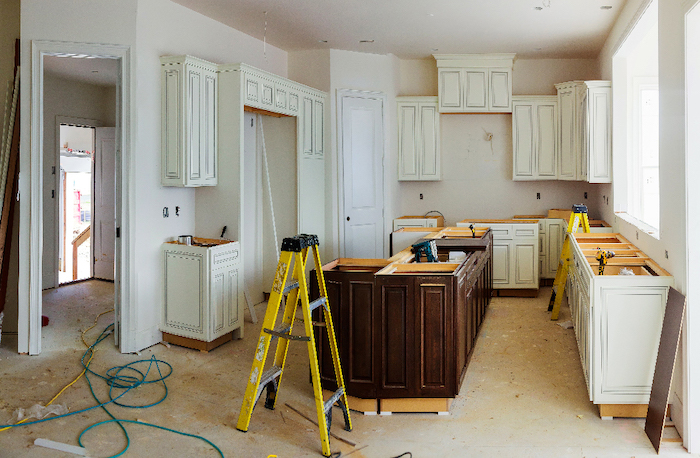What Does It Mean to Be a “Non-Luxury” Designer Today?

January 16, 2023
With everything getting more expensive and prices everywhere going up, what does it mean to be a “non-luxury” designer trying to help “regular” folks get happy at home?
Just five years ago, I would have told clients that they could complete a fully tiled bathroom remodel for $30-40,000 (and up), and nowadays I don’t feel I can say it’ll come in less than $80,000 in the Seattle area – that’s an astonishing leap up in costs! Likewise, I’d have said you could fully remodel a kitchen with stone counters and semi-custom cabinets for $80K and up, but now even “normal” kitchens regularly exceed $125K.
If this is the “new normal” how do designers continue to help folks who have long dreamed of renewing their kitchen, or replacing all their worn out furniture when they finally end up with an empty nest?
#1: Educate Our Clients: What Are Realistic Numbers?
These economic changes make it that much more important that we designers be brave and share the real numbers with our clients. While we can’t say for certain what a project will cost (since that depends a lot on which contractor you hire), we need to be willing to give realistic starting costs, even if that means we might lose a client for that hoped-for project – at least not right now.
When designers share these higher-than-expected numbers with clients, we aren’t trying to shock them, or take advantage of their hard-earned savings. We’re just trying to make sure that they understand what their project will take – not just financially, but also emotionally – before they invest too much money.
#2: Empower Our Clients: Let’s Look for Creative Solutions!
A designer doesn’t want their clients going into debt in order to get a new kitchen. The great news is that sometimes it’s not necessary to replace everything to get some of the changes clients need. For example, maybe some storage needs could be addressed by adding clever pullouts. Maybe the new look could come from just refreshing or refacing cabinets, instead of fully replacing them.
This is a great example of a kitchen that was updated just by replacing the counters, backsplash tile and hardware. Our client was convinced she’d have to replace her cabinets in order to love her kitchen, but she didn’t – yay! Think about the money she saved by not changing the cabinets (or the floors).
#3: Evaluate Client DIY Options
Doing things yourself is (sometimes) a great way to save money. Doing your own demo, or painting your own cabinets, can literally save thousands of dollars! But (and this is the important part) clients have to be realistic about their available time and energy. How much free time do they have to learn the skills, fix their newbie mistakes, and actually execute the project. And will your family survive the chaos that will surround you while you take apart your space and slowly put it back together? A responsible designer will want to help clients evaluate if DIY is the right solution for them.
#4: Source Thoughtfully – Does Everything Have to be High-End?
The whole key to being a “non-luxury” designer is that we know our clients will be very happy with tile that costs $5-$45/sf; prefer light fixtures that cost $1,000, not $10,000; and can live with rugs from Wayfair that might last five years instead of 50 in order to save tens of thousands of dollars. Occasionally there’s reason to splurge – for example, one of our clients chose $100/sf tile as a feature for her stair risers, but the rest of the kitchen and bath tile was more modestly priced. Another of our clients chose gorgeous ginko leaf drawer pulls at $40 each, but it was only for a handful of bathroom cabinets, not a whole kitchen.
The key is to get clear on both your client’s budget and their highest priorities, so we’re value-engineering in the right areas.
The most important thing for a designer to remember is that there is always something clients can do – even if it’s not the full remodel they might have had in mind. I started my company after making over my own whole home on a recently-divorced (i.e., very little money) budget. I put new paint colors to work, and scoured consignment shops and Craigslist for deals that would help me see my future in my home, instead of my past. So rest assured: Change is possible.
Watch Out for “Penny-Wise, Pound Foolish” Choices
In the end, if a client goes for the whole enchilada and spending the big bucks, just make sure to get crystal clear on their priorities. Don’t overspend, but don’t underspend, either. Better for them to spend that extra $5,000 and love their kitchen, than scrimp too much and feel like the $100,000 they did spend didn’t get them a space that makes them seriously happy.
—By Rebecca West, CEO and founder of Seriously Happy Homes
More News
April 17, 2024 | People
WAC Lighting Promotes Becky Li to President
April 16, 2024 | Awards & Events
Kips Bay Boys & Girls Club Honors Ellie Cullman, Cosentino
April 15, 2024 | Trends & Inspirations
Houzz: Renovation Slows, but Design Pros Optimistic
April 15, 2024 | KBB Collective
Outdoor Kitchen Style: Maximizing Style & Functionality in Small Spaces
April 14, 2024 | Awards & Events
Coverings 2024 Announces 10th Class of Rock Stars
April 2, 2024 | Sponsored
Whirlpool Corp. Brings Purposeful Innovation Home